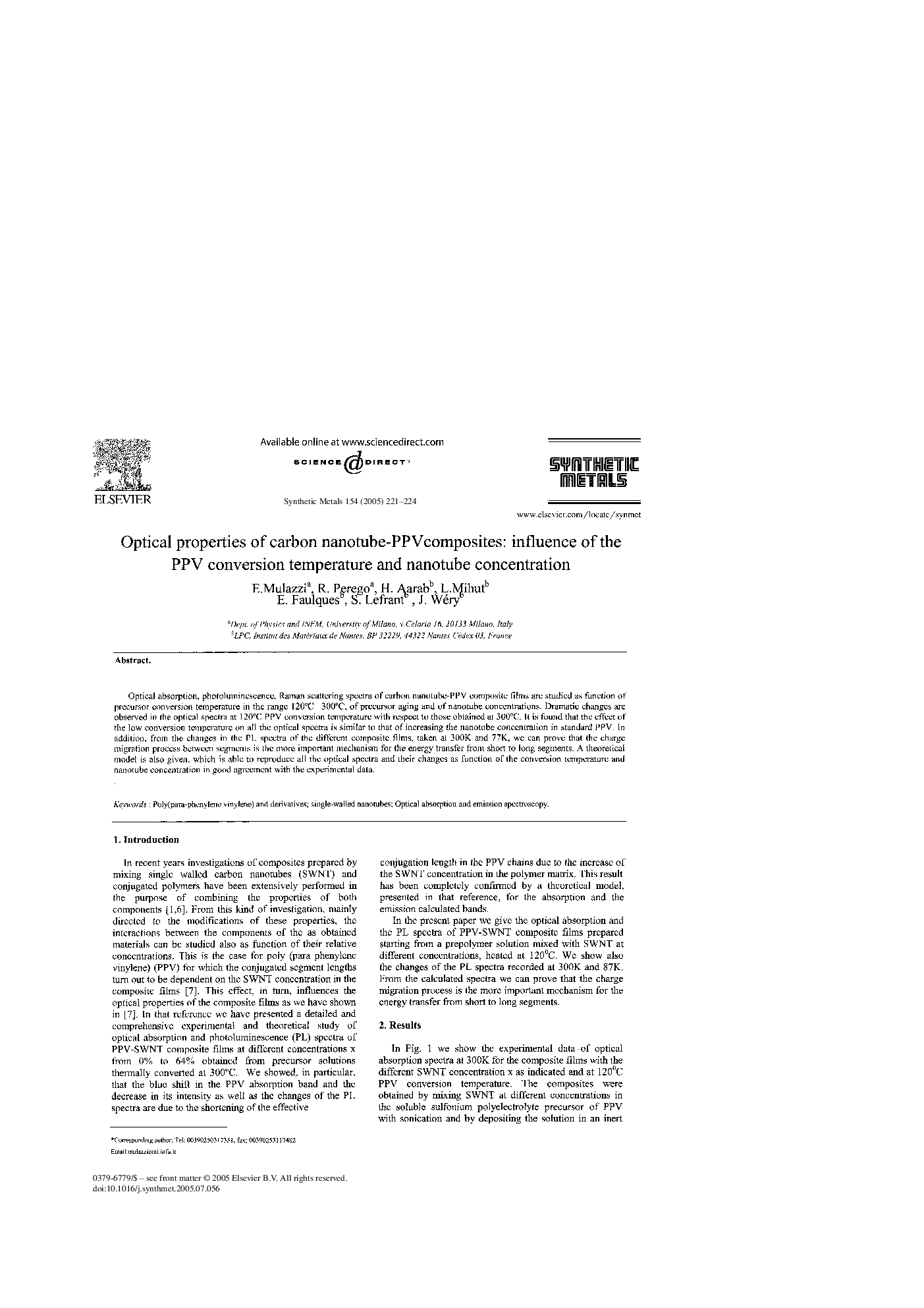| Article ID | Journal | Published Year | Pages | File Type |
|---|---|---|---|---|
| 9776254 | Synthetic Metals | 2005 | 4 Pages |
Abstract
Optical absorption, photoluminescence, Raman scattering spectra of carbon nanotube-PPV composite films are studied as function of precursor conversion temperature in the range 120 °C-300 °C, of precursor aging and of nanotube concentrations. Dramatic changes are observed in the optical spectra at 120 °C PPV conversion temperature with respect to those obtained at 300 °C. It is found that the effect of the low conversion temperature on all the optical spectra is similar to that of increasing the nanotube concentration in standard PPV. In addition, from the changes in the PL spectra of the different composite films, taken at 300 K and 77 K, we can prove that the charge migration process between segments is the more important mechanism for the energy transfer from short to long segments. A theoretical model is also given, which is able to reproduce all the optical spectra and their changes as function of the conversion temperature and nanotube concentration in good agreement with the experimental data.
Related Topics
Physical Sciences and Engineering
Materials Science
Biomaterials
Authors
E. Mulazzi, R. Perego, H. Aarab, L. Mihut, E. Faulques, S. Lefrant, J. Wéry,
